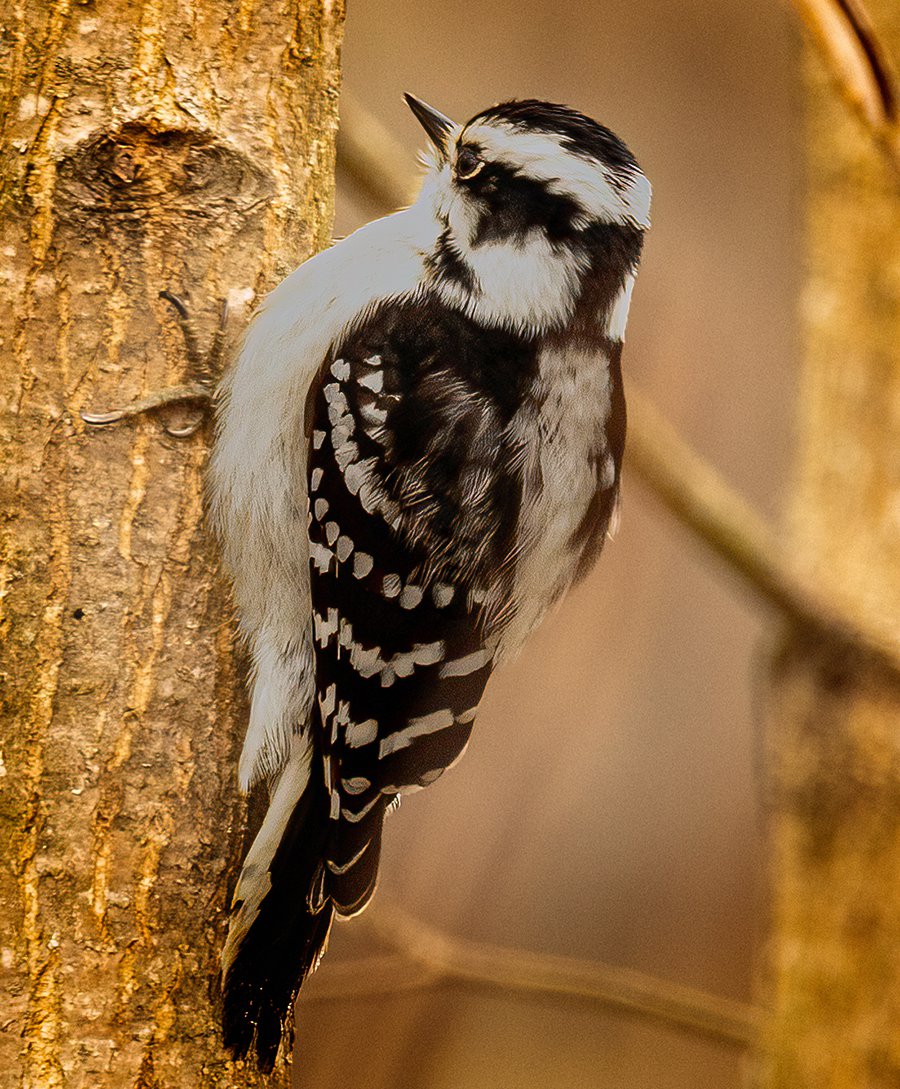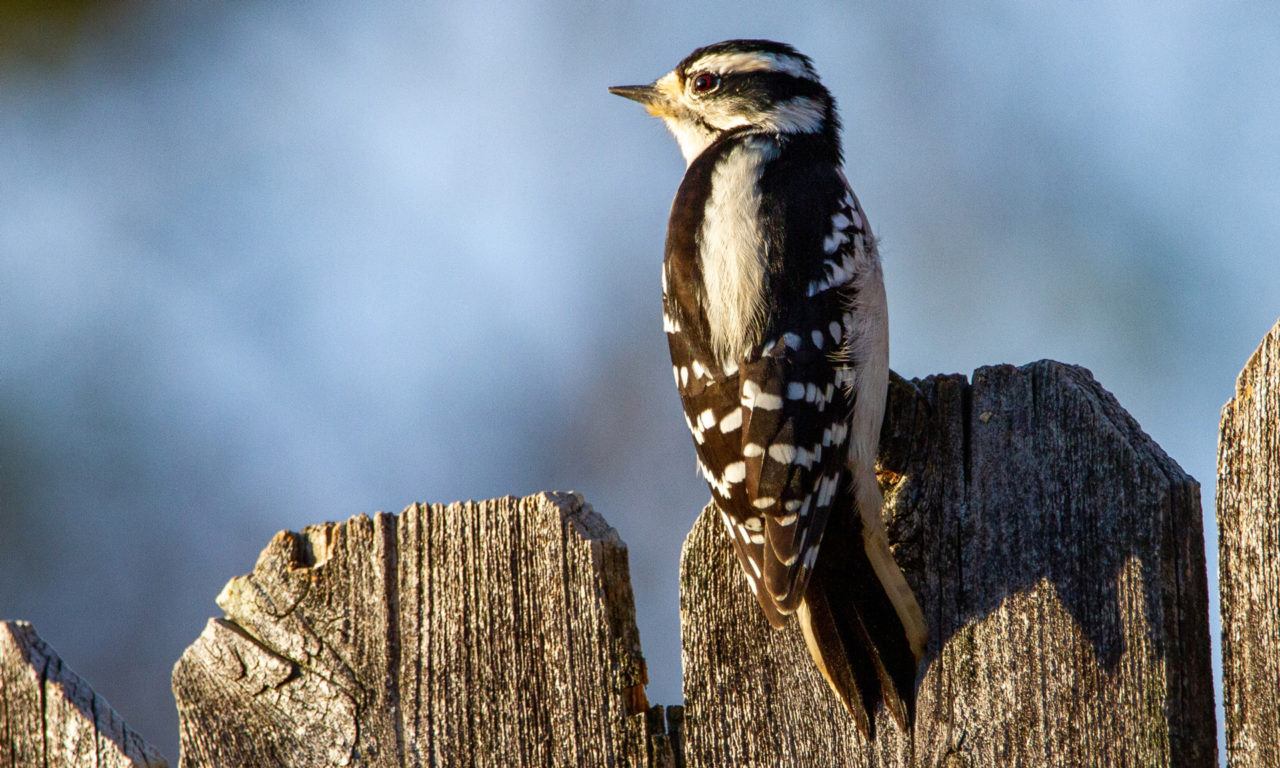Woodpeckers: A Comprehensive Overview to Recognizing These Special Birds
Woodpeckers, with their distinctive actions and physical qualities, have long captivated the inquisitiveness of ornithologists and nature fanatics alike. From their balanced drumming echoing via the timbers to their exceptional adaptations for scaling tree trunks with ease, these birds provide a remarkable study in bird biology. What truly establishes woodpeckers apart is not just their striking look but likewise their essential role in keeping the delicate balance of ecological communities. As we discover the complex composition, diverse species, and ecological relevance of woodpeckers, a much deeper gratitude for these distinct birds and the enigmas they hold unravels.

Woodpeckers' Drumming Behavior
Woodpeckers exhibit a rhythmic and precise drumming behavior that offers numerous necessary features in their day-to-days live. This behavior is primarily connected with communication, area defense, and foraging. The distinctive drumming audio is produced by the rapid pecking of their beaks against tough surfaces such as tree trunks, branches, or even steel things.
Communication is an essential facet of woodpecker habits, and drumming plays a considerable role in this procedure. Woodpeckers utilize drumming to establish their visibility, draw in mates, and keep contact with their partners and spawn. The frequency, strength, and duration of drumming sequences communicate particular messages to other woodpeckers in the location.
Along with interaction, woodpeckers utilize drumming actions for area defense. Woodpeckers in Florida. The loud and recurring drumming offers as an advising to prospective trespassers, signifying that the area is currently declared. By developing their area via drumming, woodpeckers minimize the likelihood of disputes over valuable resources such as food and nesting sites
Furthermore, woodpeckers also utilize drumming as a foraging strategy. The rhythmic pecking aids them locate bugs concealing below the bark of trees by developing vibrations that interrupt the prey's cover-up. This actions showcases the adaptability and ingenuity of woodpeckers in using their drumming skills for several essential functions.
Special Adaptations for Tree Climbing
Having understood the art of drumming to communicate, protect region, and forage, woodpeckers have actually developed special adjustments that facilitate their exceptional climbing up capacities in their arboreal habitats. One essential adjustment is their specialized feet. Woodpeckers have zygodactyl feet, with two toes aiming onward and two toes directing backwards. This setup gives a strong hold on the upright surface areas of trees, permitting them to stick effortlessly while foraging for bugs or drumming. Furthermore, woodpeckers have tight tail plumes that work as a prop to support their bodies as they climb. These tail feathers offer stability and balance, allowing woodpeckers to steer up tree trunks with accuracy and dexterity.
Furthermore, woodpeckers have powerful neck muscles and a special head framework that help in their climbing capabilities. Their strong neck muscles allow them to rapidly peck at tree bark without experiencing whiplash, while their thick skull and tiny mind work as shock absorbers, shielding them from the influence of duplicated drumming. These adjustments collectively enable woodpeckers to browse the upright world of trees with efficiency and poise.

Function of Woodpeckers in Ecosystems
By foraging for insects under the bark of trees, woodpeckers aid manage bug populaces, stopping break outs that might hurt the general health and reference wellness of the woodland. Furthermore, woodpeckers produce tooth cavities in trees that serve as important nesting sites for a variety of other bird varieties, advertising biodiversity within the environment.
Additionally, the drumming and articulations of woodpeckers play an important role in interaction and area facility. These audios not only offer to attract companions yet also aid define borders between various woodpecker territories, lowering conflicts and advertising an unified coexistence within the forest community. In general, the presence of woodpeckers in forest ecological communities highlights their significance as keystone types, influencing the characteristics and working of these environments in diverse means.
Anatomy: Specialized Beaks and Feet
In the detailed internet of woodland environments, the specialized beaks and feet of woodpeckers are necessary adaptations that enable them to meet their essential ecological roles. Woodpeckers possess distinct physiological features that are specifically made to aid them in their foraging and nesting actions.
One of the most distinctive attribute of woodpeckers is their strong, chisel-shaped beaks. These beaks are flawlessly adjusted for drilling right into wood to discover pests, larvae, and sap hidden underneath the bark of trees. The solid muscles and sturdy framework of their beaks enable hop over to here woodpeckers to eat a rate of up to 20 times per second without triggering damage to their heads.
Additionally, woodpeckers have specialized feet that aid in their acrobatic climbing capabilities. Their feet have two toes pointing forward and 2 toes pointing backwards, giving a solid grasp on upright surface areas (Woodpeckers in Florida). This distinct foot arrangement, in addition to tight tail feathers that function as an encouraging prop, enables woodpeckers to hold on to tree trunks and branches effortlessly while they look for food or excavate nesting cavities
Woodpecker Types Diversity
What elements contribute to the remarkable diversity of woodpecker species across different habitats and areas? Woodpeckers are a varied team website link of birds found across various communities worldwide, with over 200 known types exhibiting adjustments to various settings. One essential element driving this diversity is the availability of ideal habitats. Woodpeckers have actually developed to inhabit a variety of environments, from forests and woodlands to meadows and deserts, each offering distinct obstacles that have actually affected the development of distinct woodpecker species.
An additional contributing aspect to woodpecker types diversity is their specialized feeding actions. Various types have actually evolved to exploit different food resources, such as insects, tree sap, fruits, and nuts, resulting in the advancement of details adaptations in beak shape, dimension, and stamina. These adaptations allow woodpeckers to forage successfully in their respective environments, decreasing competition amongst species and promoting niche differentiation. Additionally, geographic seclusion and historical elements have actually contributed in shaping the circulation and diversity of woodpecker types, leading to the large array of specialized adaptations seen in these interesting birds.

Final Thought
In final thought, woodpeckers are remarkable birds that display special drumming habits, specialized adaptations for tree climbing, and play crucial duties in ecological communities. With a diverse range of woodpecker species found worldwide, these birds are important for preserving the wellness and equilibrium of forests and forests.